#ancient marine fossil
Explore tagged Tumblr posts
Photo

PHYLLOCERAS Fossil Ammonite, Aptian Stage, Cretaceous Period | Genuine Moroccan Specimen + COA
PHYLLOCERAS Fossil Ammonite – Aptian Stage, Cretaceous Period, Morocco
This beautifully preserved Phylloceras fossil ammonite represents an extinct genus of cephalopods that thrived during the Aptian stage of the Early Cretaceous, around 125 to 113 million years ago. Found in the fossil-rich strata of Morocco, this specimen offers a fascinating glimpse into ancient marine ecosystems and the evolution of ammonoids.
Fossil Type & Species:
Type: Invertebrate Fossil (Ammonite Shell)
Genus: Phylloceras
Order: Ammonitida
Suborder: Phylloceratina
Family: Phylloceratidae
Geological Age: Aptian Stage, Early Cretaceous (approx. 125–113 million years ago)
Geological & Stratigraphic Details:
Formation: Likely from Cretaceous marine deposits of the Atlas Basin or adjacent units in Morocco
Depositional Environment: Open marine setting with fine sedimentation that supported the fossilisation of delicate cephalopod shells
Biozone: Aptian ammonite-bearing marine strata (specific zonation not formally assigned)
Morphology & Features: This Phylloceras specimen exhibits the key traits of the genus:
Strongly involute, smooth shell with subtle, fine growth lines
Globular to slightly compressed whorls with continuous outer curvature
No ribs or nodes, unlike many Jurassic or Cretaceous ammonites
Intricate suture lines visible on polished or naturally weathered sections
Fossilised in iron-rich limestone or marl, typical of Moroccan preservation, displaying earthy hues of beige, grey, or brown
Notable: Phylloceras is considered one of the most primitive and long-lived ammonite genera, known from the Triassic through the Cretaceous. Its smooth shell and complex sutures are diagnostic and make it both scientifically significant and aesthetically desirable.
Specimen Details:
Origin: Morocco (likely Atlas Basin or nearby marine units)
Genus: Phylloceras
Fossil Type: Ammonite Shell (Invertebrate)
Geological Stage: Aptian, Early Cretaceous
Size Reference: Scale rule square = 1cm (please refer to photos for exact sizing)
Note: You will receive the exact fossil specimen shown in the photos
Authenticity & Quality: We hand-select every fossil based on authenticity, preservation, and visual appeal. This specimen comes with a Certificate of Authenticity and is guaranteed to be 100% genuine — with no reconstructions or artificial enhancements.
Why Choose This Fossil? This Phylloceras ammonite is ideal for:
Fossil collectors seeking rare Cretaceous ammonites
Educational or teaching collections
Natural history and marine evolution enthusiasts
Unique and natural decor or gift idea
Shipping & Packaging: Carefully packed using eco-conscious materials. We offer fast, secure shipping with tracking to ensure your fossil arrives safely.
Add a timeless marine relic to your collection with this elegant Phylloceras fossil ammonite from the Cretaceous seas of Morocco.
All of our Fossils are 100% Genuine Specimens & come with a Certificate of Authenticity.
#Phylloceras ammonite fossil#genuine fossil ammonite#Aptian ammonite Morocco#Cretaceous ammonite fossil#Moroccan ammonite#fossil with COA#real ammonite shell#collector ammonite#Phylloceratina fossil#fossilised cephalopod#ancient marine fossil#authentic ammonite fossil#decorative fossil specimen#Aptian Cretaceous fossil#Phylloceras shell
0 notes
Text

Coelacanth Sketch
Idea for a possible traditional canvas painting that I may try paint soon
#my art#sketch#brainstorm#coelacanth#ancient fish#marine#fish#prehistoric#Thinking of doing some irl canvas paintings based on prehistoric fish/molluscs maybe so this is me just sketching some ideas#digital art#art#living fossil#they are such cool fish
788 notes
·
View notes
Text
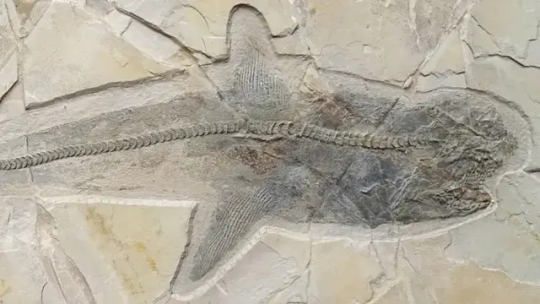
Shark News!! Fossil of an ancient shark that swam in the age of dinosaurs solves centuries-long mystery
🦈🦈🦈🦈🦈🦈🦈🦈🦈🦈🦈🦈🦈
2K notes
·
View notes
Text

It’s Fossil Friday! If you’ve been inside the Museum’s Hall of Vertebrate Origins, you may have noticed this marine reptile hanging overhead. Meet Thalassomedon haringtoni, a long-necked plesiosaur that lived during the Late Cretaceous some 85 million years ago. This behemoth had a relatively small head and many sharp teeth. Its long, flexible neck probably helped in grasping rapidly moving prey. Plesiosaurs, a group related to lizards, lived in the sea. Although they weren’t dinosaurs, they became extinct at the end of the Cretaceous around 65 million years ago, at the same time as the non-avian dinosaurs.
The Museum is open daily from 10 am–5:30 pm! Plan your visit.
Photo: © AMNH
#science#amnh#museum#fossil#nature#natural history#animals#fact of the day#did you know#plesiosaur#marine life#ancient oceans#cretaceous period#late cretaceous#cool animals#natural history museum#museum of natural history#dinosaurs#prehistoric animals#stem
1K notes
·
View notes
Text
🐠 Daily Fish Fact: 🐠
Coelacanths were once known only from fossils and were thought to have gone extinct approximately 65 million years ago. Much to scientists' surprise, the first living coelacanth was discovered in 1938. Numerous characteristics are unique to this fish. Among them is the presence of a "rostral organ" in the snout that is part of the electrosensory system, and an intracranial joint or "hinge" in the skull that allows the anterior portion of the cranium to swing upwards, greatly enlarging the gape of the mouth.


#coelacanth#living fossil#old as dinosaurs#old fish#ancient#unique#unique fish#fish#fish facts#facts about fish#daily fish#daily fish facts#marine#ocean#marine life#ocean life#marine animal#ocean animal#fishes#fish post#marine biology
420 notes
·
View notes
Text
fun fact, did you know that sharks existed before the North Star even formed? they also existed before TREES!
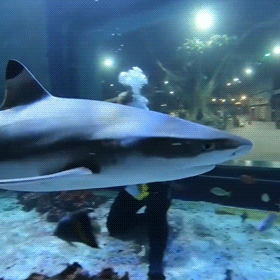
i love sharks
#shark facts#shark#shark thoughts#i love sharks#biology#marine biology#marine animals#marine life#history#paleontology#fossils#ancient history#evolution#life#fun facts#facts#interesting facts#random facts#animal facts#trees
60 notes
·
View notes
Text


Trident Walliserops fossils.
These fossils come from a pre-historic animalia within the species of trilobite's. Spinose phacopid trilobite's, of the family Acastidae. This is one of other trilobite's which have back spines that exude upwards. This is also one among others like it in particular that stand out as they have their nose-like appendage exuding from its front-side facial carapace.
────────────────────────────────────────────
⇾ Follow my page for more epic, silly and boomblu content; share so I can grow if you wish, and come visit my other socials at my Linktree [Just click the word Linktree, it's hyperlinked :)]. ⇽
Check out the rest of my posts too!!! A lot of them are underrated. ;o Like everything you find interesting if you want. :3 Remember, you can find all of my socials here (click the word [here], it's hyperlinked (。◕‿‿◕。) For the plain link; here it is: https://lynkfire.com/Gliphel&Glyph%20LLC%20Incorperated Also; if you prefer Linktree, it's here.
#fossil#fossils#paleontology#paleoblr#evolution#prehistoric#prehistoric life#dinosaur#palaeoblr#trilobite#trilobite fossil#ancient#ancient animal#aquatic#aquatic life#sea creatures#marine#marine biology#marine life#fish#sea animals#sea life#ocean
207 notes
·
View notes
Text
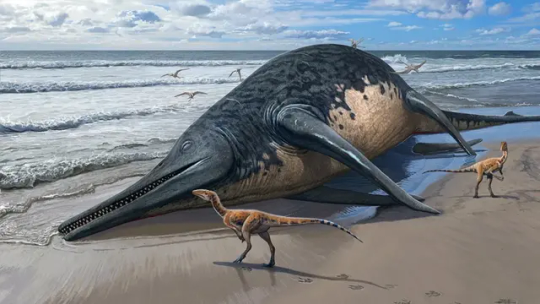
Gigantic Marine Reptile Fossil Found by 11-Year-Old Girl and Father
A massive jawbone found by a father-daughter fossil-collecting duo on a beach in Somerset along the English coast belonged to a newfound species that’s likely the largest known marine reptile to swim in Earth’s oceans.
Scientists consider the blue whale, which grows up to 110 feet (33.5 meters) long, to be the largest known animal ever to exist on the planet. But it’s possible that the 202 million-year-old reptile, known as an ichthyosaur or “fish lizard,” may have rivaled it in size.
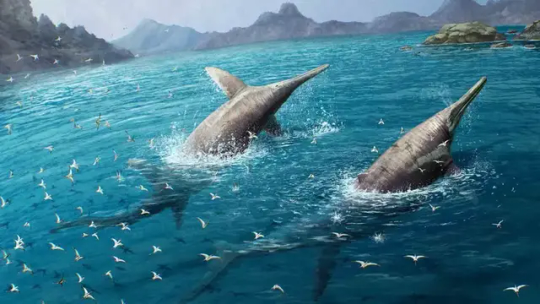
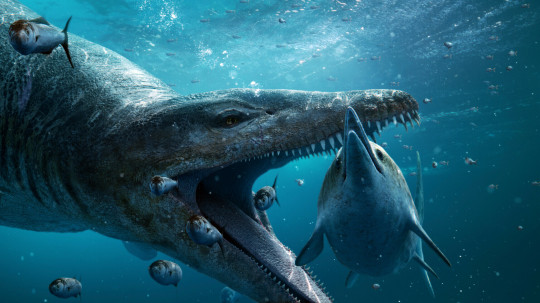
The ichthyosaur’s jawbone, or surangular, was a long, curved bone at the top of the lower jaw just behind the teeth, and it measured more than 6.5 feet (2 meters) long. Researchers believe the creature, named Ichthyotitan severnensis, or “giant fish lizard of the Severn” in Latin, was more than 82 feet (25 meters) long, or the length of two city buses.
Justin and Ruby Reynolds, who live in Braunton, England, recovered the first pieces of the jawbone in May 2020 as they looked for fossils on the beach at Blue Anchor, Somerset. Ruby, 11 at the time, spotted the first chunk of bone, and then she and her dad found additional pieces together.
By Ashley Strickland.
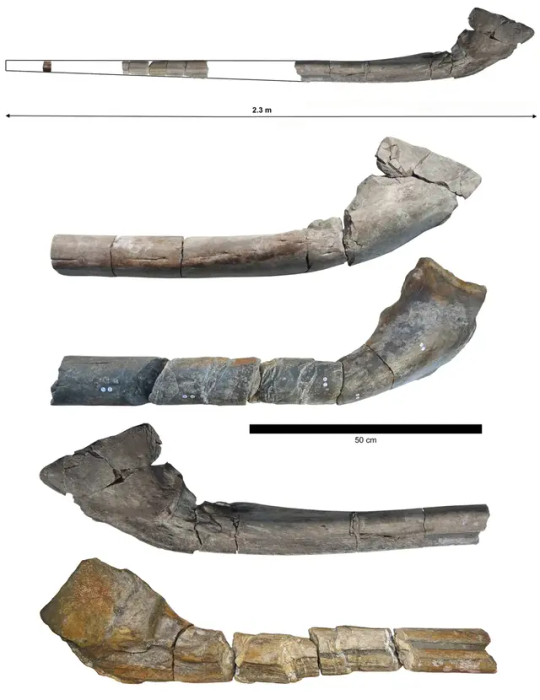

#Gigantic Marine Reptile Fossil Found by 11-Year-Old Girl and Father#Somerset#ichthyosaur#Ichthyotitan severnensis#giant fish lizard of the Severn#fish lizard#ancient artifacts#archeology#archeolgst#history#history news#ancient history#fossils
28 notes
·
View notes
Text






Dive into the world of Orthoceras, where ancient cephalopods ruled the seas with their distinctive straight shells! 🦑 Their well-preserved fossils offer a fascinating glimpse into Earth's prehistoric past. 🕰️
#orthoceras#prehistory#prehistoric#paleobiology#paleozoic#paleontology#paleoart#paleoblr#paleo#marine animals#ancient animals#animal#animals#fossils#ordovician#marine biology#biology student#biology#biology studyblr#biology facts#science#zoology#science facts#education#discover#scicomm#study blog#studyblr#explore#simps for science
21 notes
·
View notes
Text
The perfect man

BOW DOWN TO THE ANCIENT ONE
55K notes
·
View notes
Photo

AMONOCERATITES lamarcki Fossil Ammonite, Aptian Stage, Cretaceous Madagascar | Authentic Specimen + COA
AMONOCERATITES lamarcki Fossil Ammonite – Aptian Stage, Early Cretaceous, Madagascar
This elegant ammonite fossil belongs to the species Amonoceratites lamarcki, an extinct marine cephalopod that lived during the Aptian stage of the Early Cretaceous, approximately 125 to 113 million years ago. Sourced from the fossil-rich beds of Madagascar, this specimen is a fine example of coiled cephalopod evolution and preservation.
Fossil Type & Species:
Type: Invertebrate Fossil (Ammonite Shell)
Species: Amonoceratites lamarcki
Order: Ammonitida
Suborder: Ancyloceratina
Superfamily: Ancyloceratoidea
Family: Ancyloceratidae (tentative classification)
Described by: Pictet & Campiche, mid-19th century (species-level assignment may vary by source)
Geological & Stratigraphic Details:
Origin: Madagascar (likely Mahajanga or Antsiranana Basin)
Formation: Marine limestone or marl from Cretaceous deposits
Geological Stage: Aptian (Early Cretaceous)
Age: ~125–113 million years ago
Biozone: Aptian ammonite-bearing strata, specific zonation not assigned
Depositional Environment: Shallow marine platform with fine sedimentation ideal for the preservation of delicate ammonite shells
Morphology & Features: This Amonoceratites lamarcki specimen displays distinctive features:
Planispiral coiling with moderately involute whorls
Fine ribbing along the shell flanks with gentle ornamentation
Tapered venter and visible suture lines, depending on preservation
Fossilised in earthy browns, beiges, or polished to enhance the inner chamber structure
Notable: Amonoceratites is a genus prized for its balanced spiral geometry and often ornate, ribbed shell structure. Though less well-known than other Madagascan ammonites, lamarcki specimens provide critical insight into ammonoid diversity and morphological transition in the Early Cretaceous.
Specimen Details:
Origin: Madagascar
Species: Amonoceratites lamarcki
Fossil Type: Ammonite Shell (Invertebrate)
Geological Stage: Aptian, Early Cretaceous
Size Reference: Scale rule square = 1cm (see photo for full sizing)
Note: The specimen in the photo is the exact fossil you will receive
Authenticity & Quality: This is a 100% genuine fossil. Each specimen is hand-selected and comes with a Certificate of Authenticity. No reconstructions or artificial enhancements are applied.
Why Choose This Fossil? This ammonite is ideal for:
Collectors of Madagascan ammonites
Natural history and evolution enthusiasts
Unique geological decor
Fossil education and science learning tools
Shipping & Packaging: All fossils are shipped securely using eco-conscious, protective packaging. Fast, tracked shipping ensures your specimen arrives in excellent condition.
Own a beautifully preserved Amonoceratites lamarcki ammonite fossil and explore the ancient marine world of the Early Cretaceous.
All of our Fossils are 100% Genuine Specimens & come with a Certificate of Authenticity.
#Amonoceratites lamarcki fossil#Aptian ammonite Madagascar#Cretaceous ammonite fossil#Madagascan ammonite#genuine ammonite shell#fossil with COA#real ammonite specimen#collector fossil ammonite#spiral ammonite shell#ancient marine fossil#authentic ammonite fossil#decorative ammonite fossil#ammonite cephalopod#Aptian Cretaceous fossil
0 notes
Text

FIRST-EVER FOOTAGE OF INDONESIAN COELACANTH IN NORTH MALUKU REVEALS NEW INSIGHTS INTO RARE SPECIES
The coelacanth, often dubbed a "living fossil," is one of the most iconic and mysterious marine vertebrates. Long thought extinct until its rediscovery in 1938, only two species are known today—Latimeria chalumnae in the western Indian Ocean, and L. menadoensis in Indonesia. The latter, the Sulawesi coelacanth, lives in deep, difficult-to-access reef habitats and has rarely been observed alive. For the first time, divers using advanced technical diving equipment have filmed a live Indonesian coelacanth in situ, at a depth of over 150 metres in North Maluku, a region where the species had not previously been recorded.

Left profile of the coelacanth, with its unique pattern of white dots. Photo by Alexis Chappuis.

- Localities from whence the Sulawesi Coelacanth, Latimeria menadoensis, has been reported in black stars. White star shows the North Maluku Province, where the first in situ sighting by technical divers was made.
This sighting is more than just a milestone in exploration—it provides critical data on the ecology and distribution of an animal that is evolutionarily unique and highly vulnerable. With few individuals ever seen in the wild, each observation adds valuable insight into how these ancient fish live and where they might still be found. It also underscores the urgency of protecting deep reef habitats that are increasingly at risk from human activities. Understanding and safeguarding the ecosystems that support the coelacanth is essential if we hope to ensure its survival into the future.
Main photo: Deep diver about a meter behind the coelacanth discovered at a depth of -144 m in North Maluku, Indonesia. Photo by Alexis Chappuis.
Reference (Open Access): Chappuis et al. 2025 First record of a living coelacanth from North Maluku, Indonesia. Sci Rep
4K notes
·
View notes
Text
0 notes
Photo
Turning Coelacanth into CoelaCAN since the Denovian period 🔥

97K notes
·
View notes
Text
#paleontology#new species#punk ferox#emo vorticaudum#aculifera#mollusc#invertebrate#exceptional preservation#excellent names
692 notes
·
View notes
Text
Daily Ray Fact:
The Fiddler Ray and their relatives are thought to be the oldest ray group, which explains why they are somewhere between a shark and a ray. It is understood that rays evolved from sharks and so really the Fiddler Ray is a visual demonstration of that change in biology, The earliest known fossil rays are only 150 million years ago and whilst there are very few well preserved fossils available there are whole bodies of ancient guitarfishes which very closely resemble that of modern day Fiddler Rays.


#fiddler ray#ancient ray#dinosaur?#fossil relative#daily stingray#stingrays#stingray facts#ray facts#daily ray facts#daily stingray facts#ray family#respect the locals#cartilaginous fish#ocean#ocean life#marine life#sea creature#animals
291 notes
·
View notes